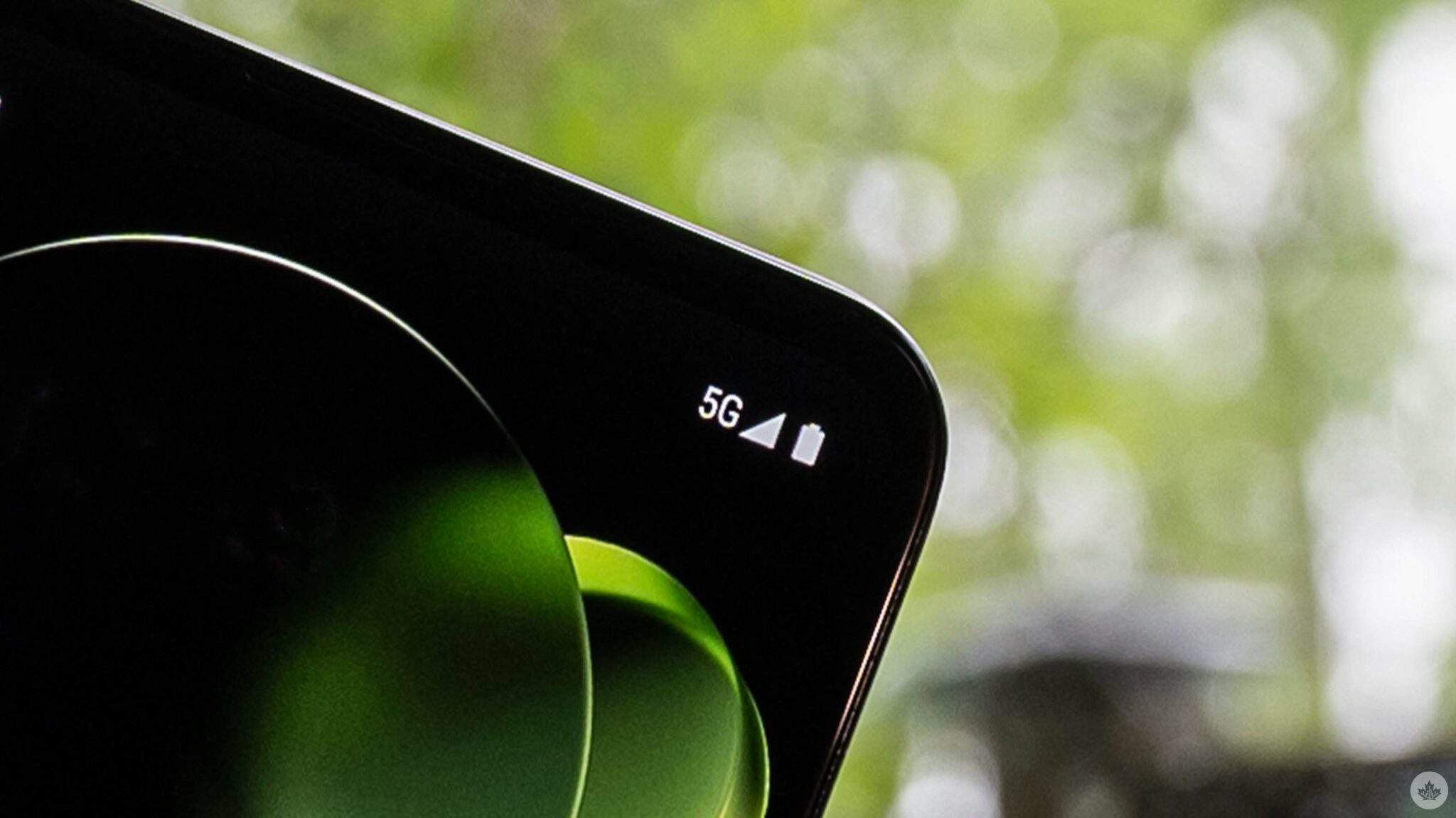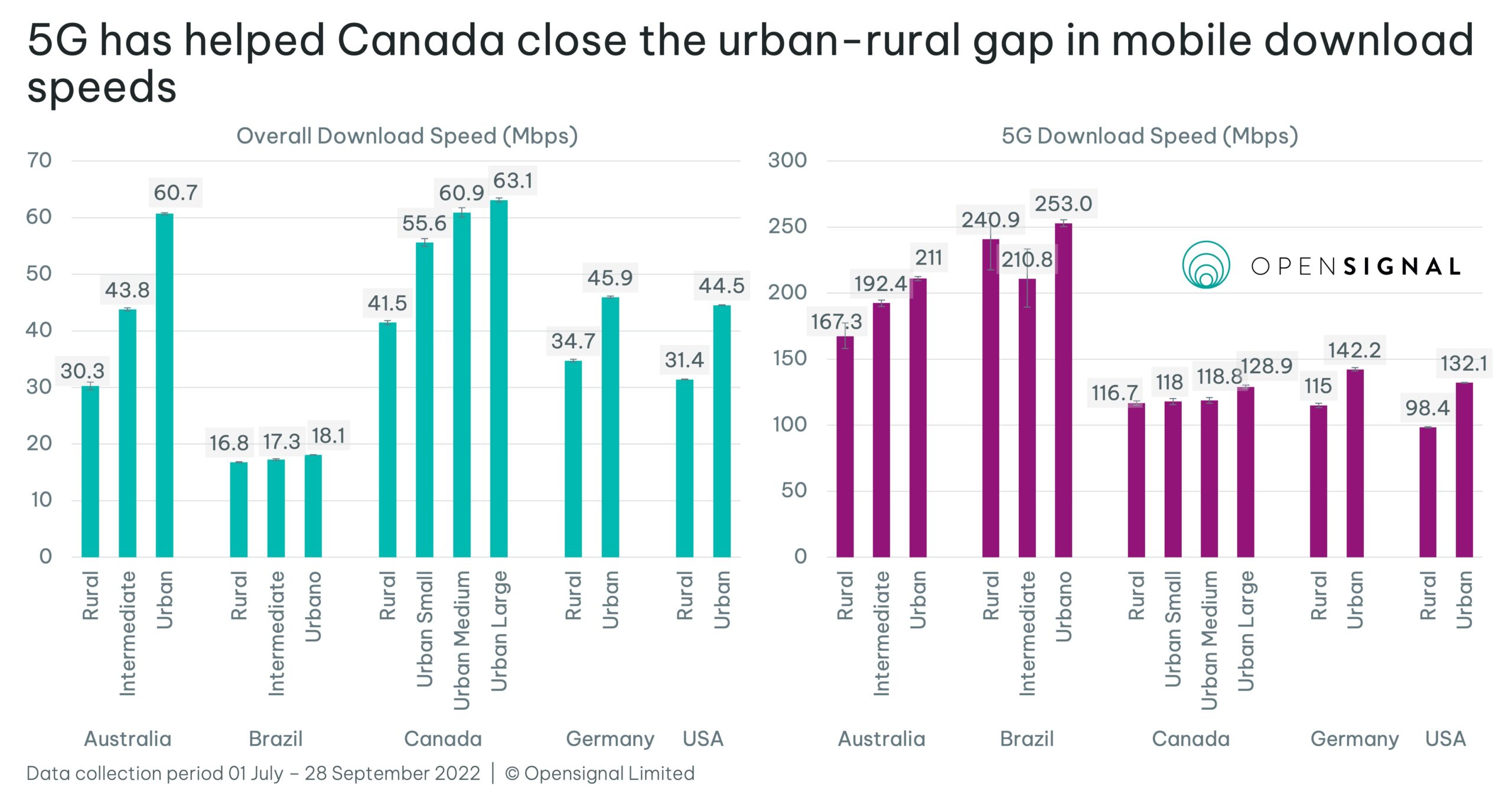
According to a new report from Opensignal, Canadian 5G is helping to close the gap between urban and rural network experiences.
Opensignal gathered data across various categories, including download speed and time spent without signal, sourced from several countries to compare with Canada. Opensignal chose “three similarly large markets,” which include Australia, Brazil, and the U.S. It also included Germany in the comparison.
Starting with download speeds, Opensignal found that Canadians experienced fairly similar 5G speeds regardless if they were in rural or small, medium or large urban areas. Specifically, rural users experienced 5G speeds that were, on average, 12.2Mbps (or 9.5 percent) slower than large urban areas.
That difference is significantly better than 4G speeds, which saw urban area speeds on average 34-52 percent faster than rural speeds.
Looking at how Canada stacked up to other countries, Brazil was the only one with statistically similar rural and urban speeds. Australia had the largest difference in 5G speeds between rural and urban areas, but Germany and the U.S. also had significant speed differences.
Also of note is that Canada’s 5G speeds overall are among the lowest of compared countries, with only rural Germany and rural U.S. posting slower 5G speeds.
Signal availability
Moving onto signal availability, Opensignal measured the percentage of time users spend without signal and the availability of 5G measured by the amount of time spent connected to a 5G signal.
For the amount of time with no signal, Canada didn’t see a huge difference between rural and urban areas, although urban users spent less time without signal. Rural areas saw Canadians without signal 2.3 percent of the time, compared to 1.3 percent for small urban and 0.9 percent for medium and large urban areas.
Looking at the other countries, Australia and Brazil saw the highest difference between rural and urban time without signal, with rural users without signal at 5.2 percent and 6.8 percent of the time, respectively. Germany and the U.S. had smaller gaps in signal availability between rural and urban users. Opensignal says the result is impressive for Canada given the “relative size of those markets.”
When it comes to 5G availability, there was a little more of a divide between rural and urban Canada. Rural Canadians had 5G access 9.6 percent of the time. Small urban areas had 10.4 percent availability, not much higher than rural, but medium and large urban areas had 14.7 and 14.2 percent availability, respectively.
Australia had the highest divide between rural and urban 5G availability, followed by the U.S. and Brazil. Germany had no significant difference in availability. Interestingly, the U.S. had the highest overall 5G availability.
Game experience
Finally, Opensignal shared a comparison of ‘games experience,’ its attempt to quantify how mobile users experience playing real-time multiplayer games over a network. Per Opensignal’s definitions page, it calculates game experience by measuring the end-to-end experience from users’ devices to the internet end-points that host real games. Game experience is measured on a scale of 0-100.
On 5G, there was no significant difference in game experience for rural and urban users in Canada. With the exception of Australia, most of the other countries also had comparable game experience scores on 5G across rural and urban regions.
Opensignal rounds out the report by noting that Canadian 5G experiences are set to improve as carriers begin rolling out 3,500MHz spectrum. Hopefully as the spectrum rolls out and improves 5G, the network continues to offer similar experiences for both urban and rural Canadians.
Those interested can view the full report here.





